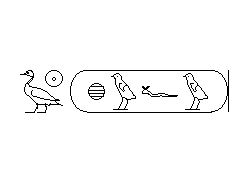
Second king of the 4th Dynasty, son of Seneferu and Hetepheres and builder of the Great Pyramid at Giza. He was the father of Khafre, among others. The only statue of the king is a tiny ivory statuette, 7.5 cm tall, found at Abydos and now in the Egyptian Museum in Cairo. Further, there is a rock drawing of him as protector of the turquoise mines in Wadi Maghara (Sinai). Not very much is known about Khufu. In later tradition he was called a tyrannical ruler. The Westcar Papyrus (whose text was written down in the 2nd Intermediate Period or the 18th Dynasty but dates to the Middle Kingdom) is a tale of wonders performed by magicians in the time of Djoser, Nebka, Seneferu and Khufu. The text also contains an unpleasant message for Khufu about a woman who will give birth to three kings of a new dynasty, fathered by the sun god Re himself. The names of the newborns contain wordplays on the names of known rulers from the 5th Dynasty. The body of Khufu has never been found, but the mastaba of his mother, Hetepheres, was discovered close to the tomb of her son and still contained part of the tomb equipment, including many objects inlaid with gold and silver. Khufu is the Egyptian form of the king's name, a short form of Khenemu-khui-ef-wy ('Khnum, he protects me'); the Greek form Cheops can be traced back to Herodotus.